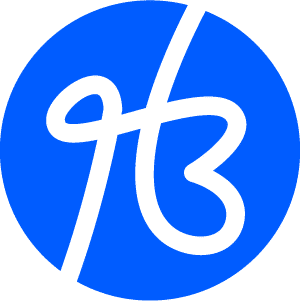Abstract
“Fire Up That Bass” was an interactive installation for a more accessible concert experience as part of the RoboLab2021 event in Cologne, Germany. It was a visual and tactile prototype to enhance a musical performance, which could be experienced through touch and visual cues. Together with our expert and contact person Dodzi Doughban, performer and European Hip Hop Champion and deaf from birth, we developed the experience based on his view of music and the importance of visuality and tactility.
Fire dances to the music on the top of a rusty oil drum using the properties of gas to respond sound waves. In practice, the main beat and bass frequencies give rise to precise and musically recognisable patterns, while lower frequences move the cone of the loudspeaker and the air or gas more strongly. At the same time sound inducers placed around the barrels under a wooden plate help to translate into a tactile experience.
The project housed a series of installations which were a collaboration between the Köln International School of Design and the cultural venue Odonien, supervised by Leib&Seele Produktionen.

Research and consultation
First, we consulted with the organisers of the festival, Odonien, Unlabel and Leib&Seele Produktionen. Experts on specific accessibility issues, which they were also affected by, introduced themselves and their views on the venue and accessibility issues. These included visual and hearing impairments, physical limitations, learning difficulties and neurodivergence. Based on their presentations, different teams of designers were formed around a specific expert and their view, pain points and gain points regarding cultural venues such as Odonien and the upcoming festival. The accessibility experts provided deeper insights into participation in cultural events and the disparities they face on a daily basis. It was important to the festival’s stakeholders that the solutions fit in with the overall industrial and mechanical feel of the venue.
Our team was formed around Dodzi Dougban, European Hip Hop Dance champion, who was born deaf. In his performances he uses the vibration of the floor, technical solutions such as a vibration backpack and the sensation of sound on his skin. He described strong penetrating bass elements in music as the most useful source to feel the beat as well as the translation into visual cues to help him understand the musical context. Throughout the entire project he supported us with his knowledge of music, performance and dance.
“He doesn’t necessarily have to hear the music, but he feels the bass and mainly the rhythm,” says his brother and sign language interpreter Denis Dougban during their joint interview on Deutschlandfunk Kultur. ( In German Language )
What we learned from the group sessions was that focusing on solving a problem for only one modality can have a greater impact than trying to create a one-size-fits-all solution. In fact, it could be counterproductive to include all features at once, as a specialised solution creates more nuance. A design for hearing impaired people might not provide a good user experience for someone with a visual impairment. However, it is important to include as many and varied backgrounds and requirements as possible in the design and construction. Constraints help to emphasise a particular point of view, which might even be applicable to others.
A challenge we got confronted with was that the installations should fit the rustic, industrial identity of the Odonien venue. And for inclusion also quite important to find a good balance of installation space and the integration of people with disabilities inside the place. There were 5 main spaces to choose from. We chose the center space in front of the stage as our expert and focus was the performance on stage.

Conceptual Phase
Drawing from Dodzi’s input the most prevalent topics were its tactile and visual dimensions of music. This guided us us through the conceptualization phase in identifying the optimal space for creating an immersive artifact. We settled for a place near in direct view of the stage area where auditory and visual stimuli mix in an amalgamation of experience. How could we enhance the experience for the deaf?
Which qualities of music did we want to focus on? Coming from the insights of a deaf dancer rhythm felt like one of the most rudimentary and important parts of the music. That is why we decided to accentuate the rhythm part of the music. Initially we contemplated about contraptions moving in patterns according to the instruments specific amplitude.
We experimented with light objects that could be moved by the amplitude of sound inducers, such as table tennis balls. (check here if you have the photo, otherwise get rid of it) The location of Odonien also had an influence on our visualisation. Then we came across Ruben’s Tube, which uses gas and a speaker to display sound in moving flames, which sounded perfect both aesthetically and within the scope of the project.
While examining the venue we discovered an old oil barrel which were in many places around the venue used as tables so sit or stand around. We imagined enhancing those tables with the sound input of the stage.


Building
Out building process began with the discovery of a weathered barrel at Odonien. We fixated a aluminium tube on top and perforated it facilitating the evaporation of air and gas.
At one end of the aluminium tube we fixed the gas outlet and at the other end the cone for the sound. When lit, this contraption displayed the sound in a flame pattern on the top.
Utilizing the facilities, we constructed a wooden plate from reclaimed bankrai planks sourced from Odonien. These were expertly shaped to encircle the barrel, providing a stable platform. Underneath the plate, sound inducers were strategically placed to transmit vibrations through the wood, enhancing the auditory experience.
We constructed the round wooden plate from reclaimed bankrai planks sourced from Odonien. They were cut into shape to encircle the barrel. The sound inducers were placed strategically to the underside of the plate to transmit the vibrations through the wood, to enhance the auditory experience.
The electronics and the gas tank for the fire installation were put into of the barrel and closed, ensuring safety throughout the course of the installation.
Leib&Seele Produktionen provided us fitting amplifiers. This component enabled us to modulate the sound to be reflected by flame patterns. Inspired by the principle of the Ruben’s Tube, the amplifier’s cone pushes the air and gas through a closed tube waves, emerging in the form of sound waves being visualized as peaks of fire.
Outcome
The finished product is a visual and tactile installation that was displayed as part of the RoboLab Festival in 2021 in Odonien in Cologne.
Learnings
Our solution was very specific to a person with hearing loss. We tried to accomodate for people inside wheel chairs but had to acknowledge that we wouldn’t be able to customize it for every persons needs. This was also very insightful. The topic of fire and gas was also a bit nervwracking as this needed guidance by people with knowledge and in the worst case a fire extinguisher.
Another topic was the topic of focus. If a fire installation if going on all the time providing visual impressions. What would that mean for attention span and other visual cues going on during a live performance. How could that be combined without overstimulating the users? This mind need more research on simultaneous input and testing which we sadly didn’t prioritise due to time constraints.
Significance
Accessibility is important if we want to build a society where all of us participate and live a happy life. Even if one never experienced a mismatch up until now in one’s life this probably will be the case as we age or circumstances change. Temporarily, situational or chronically we can experience a mismatch with the design of the world. Specialised solutions will benefit more people in the end than one might think. As we discussed with the production team you can not help to overcome the mismatch for every person. As one solution might be a mismatch for another person if not done carefully. But if we keep an open mind to all those possible mismatches in the world and truly integrate those experts in the process of decision this will go a long way.


